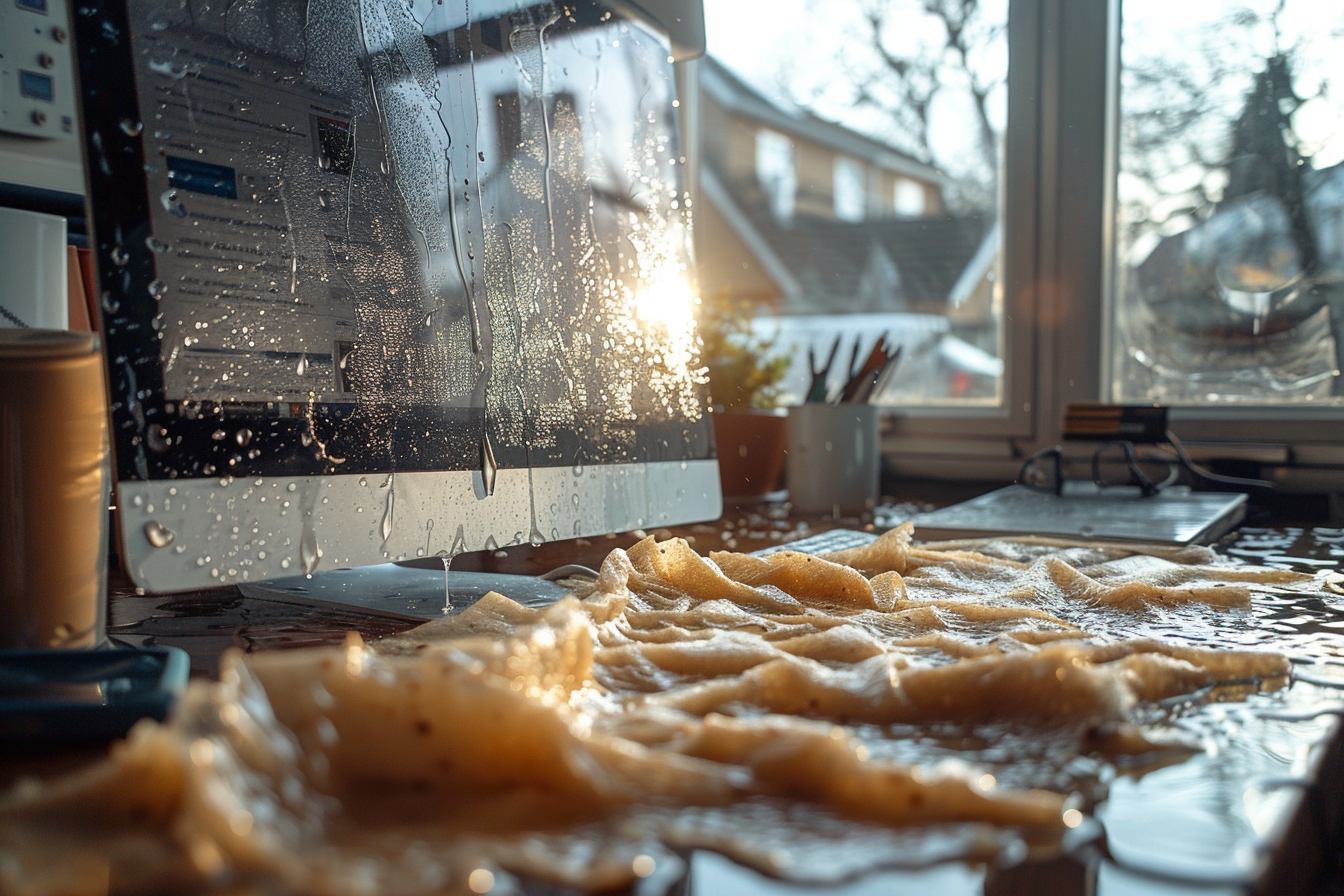Water and electronics don’t mix. When your computer takes on water, a feeling of panic quickly sets in. You think about your important data, the hours of work saved in this little electronics box… Your first reflex will have a significant impact on the survival of your equipment. So, take a deep breath, and let’s dive into the steps you can take to maximize your chances of saving your computer.
Detect the damage as early as possible
From the moment you notice that your computer has taken on water, time is a deciding factor. The sooner the device is turned off and stored away, the less likely water is to infiltrate sensitive components. If the computer was charging, unplug it immediately to avoid any risk of short circuit or electric shock.
Turn off the power and remove the batteries
Turning off the computer is imperative. Do it cleanly if possible, but if water seeps in quickly, opt for an emergency shutdown by holding the power button. Remove all power sources, including the battery if it is removable. This reduces the risk of internal electrical damage.
Dismantle what can be dismantled
If you have some computer knowledge, disassemble the accessible components of your computer. Carefully remove the hard drives, RAM sticks, and network card if possible. Exercise caution as one wrong move could make the situation worse.
Dry the components
Once you have access to the inside of your machine, gently blot up any visible water. Use a dry cloth, or even better, lint-free paper towels. Avoid spilling water and touching circuit boards or electrical components with your hands.
Never make the mistake of turning it back on
Be patient and definitely don’t try to turn your computer back on to “see if it still works”. This action could cause a fatal short circuit. Powering up a wet device is one of the highest health risks to your hardware.
Use natural absorbents

You can use natural absorbents such as rice or silica sachets, often found in the packaging of new electronic products. Place wet components near them in a dry container to extract remaining moisture.
Leave to dry for several days
Patience is required. Leave your disassembled equipment to dry in a dry, well-ventilated place for several days. The duration may vary depending on ambient humidity and the amount of water that has entered the computer, but it is often recommended to wait at least 48 to 72 hours.
Clean up the residue
If the water that touched your computer was not pure, residue could damage the components. Cleaning traces of minerals or other impurities can be done with isopropyl alcohol at 90% or higher, applied gently with a cotton swab.
Consider professional help

Faced with severe flooding or if you are not confident enough to open your computer, the intervention of a professional may be wise. Repairers often have special tools and techniques to maximize the chances of recovering your equipment.
Assess the damage and reassemble the computer
After a sufficient drying period, inspect the damage visually. If everything seems dry, carefully reassemble the computer and test it. Start by powering up the motherboard with the bare minimum of components, to see if the system boots normally.
Back up data
Ideally, your important data has already been backed up regularly elsewhere. If not, and the computer manages to boot, immediately back up your data to an external hard drive or cloud storage service. Prevention is cure, this saying has never been more applicable than in the case of a water damaged computer.
Have a plan b
Even if everything seems to work after a water accident, problems can arise weeks or even months later. Corrosion, damaged circuits having survived temporarily, the consequences are not always immediate. So be prepared to invest in a new device if necessary.
Consider insurance and guarantees
Check your insurance documents or warranty. Some policies cover household accidents, including water damage to electronics. Keep in mind that the standard manufacturer’s warranty generally does not cover water damage, but there are extended warranties that may include this type of coverage.
The key to saving a computer that has taken on water is rapid, methodical action. Every second counts, and following these steps can mean the difference between salvageable equipment and total damage. Keep calm, act with caution and wisdom. After all, technology is powerful, but it remains fragile when faced with the elements of nature. Then, don’t forget that prevention and regular backup of your data are your most reliable allies in the fight to preserve your most valuable information.













